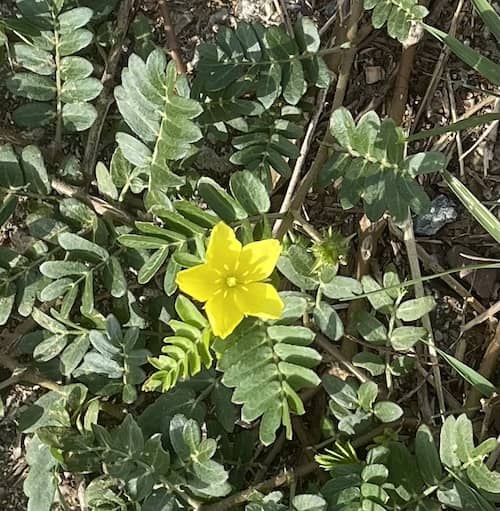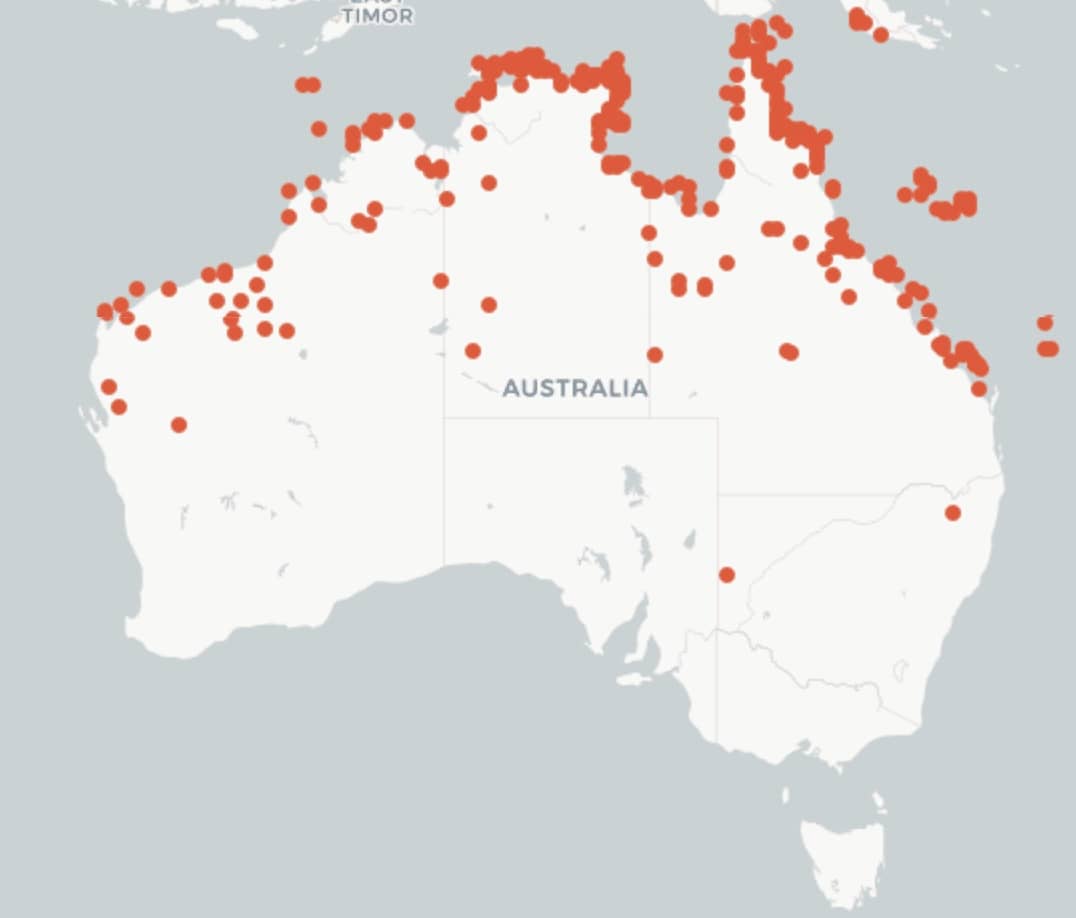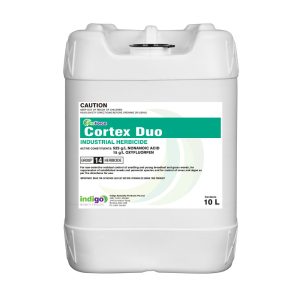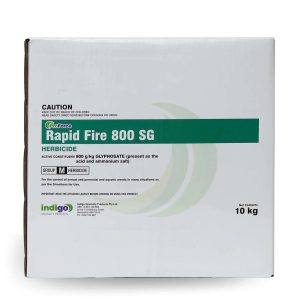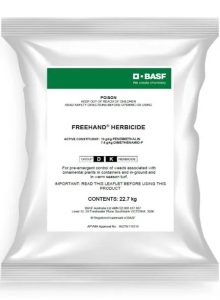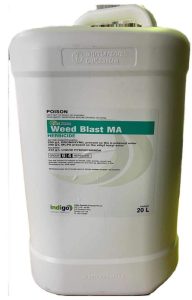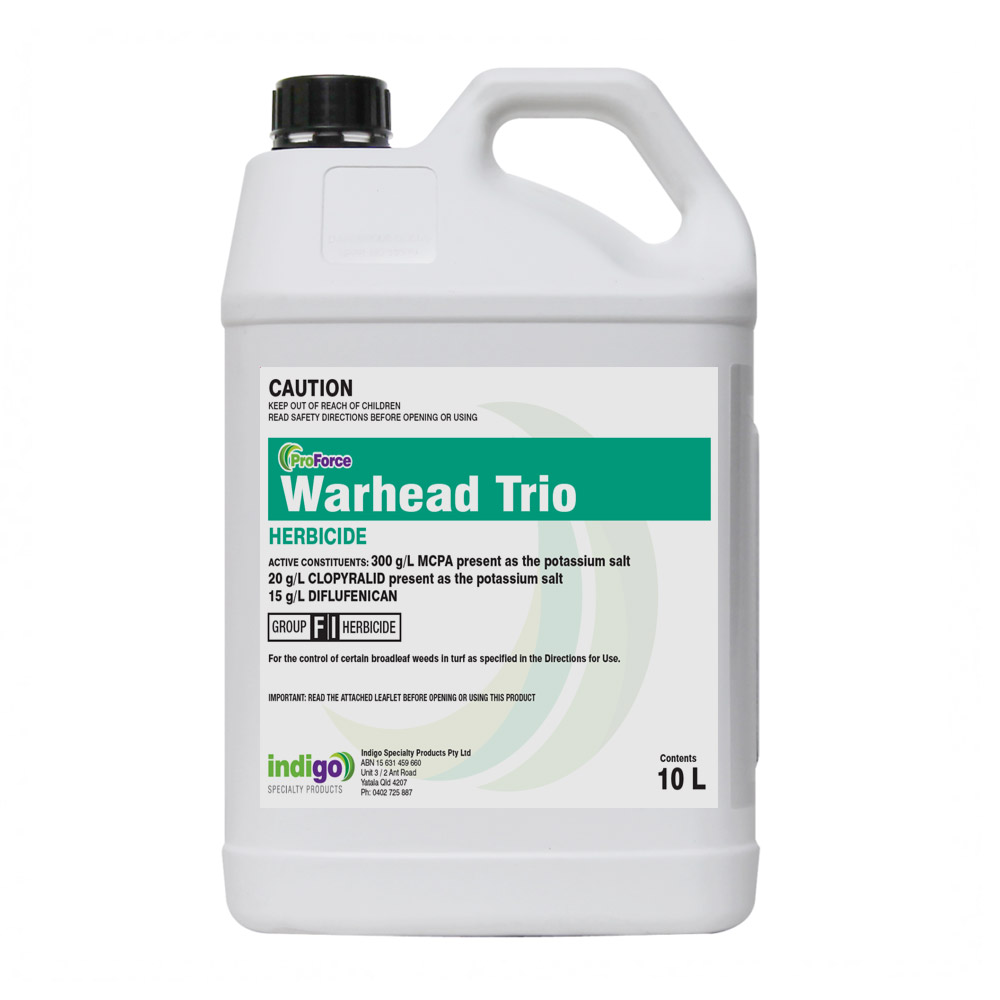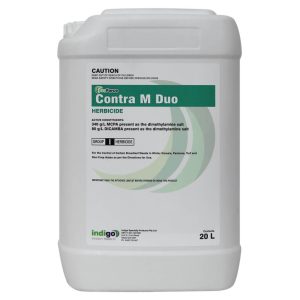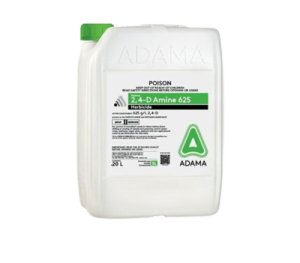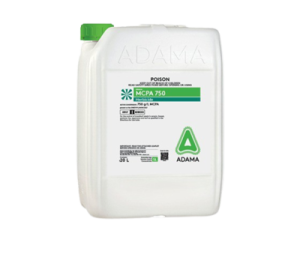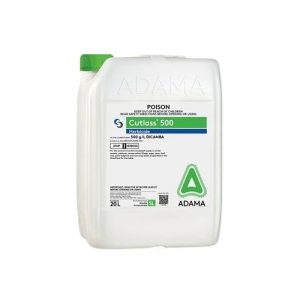Caltrop (Tribulus terrestris).
Caltrop aka Bindy-eye or Cathead, is a prostrate, warm season annual weed that has spiny burrs. It is often found in areas of frequent Spring and Summer rain, and is in all Australian states except TAS.
In NSW it is common in the Central West slopes and the North West slopes because:
- They have good Summer rains.
- High Summer temperatures and bright light.
- The soils are fertile.
After you read this, you will be able to:
- Identify Caltrop, Cathead or Bindy-eye.
- Know the habitat of Bindy-eye or Cathead.
- Know the best cultural and chemical options for Bindy-eye or Cathead.
Why is Caltrop a Problem?
Caltrop is a problem weed because:
- Each plant produces up to 20,000 seeds.
- Its seeds are viable for up to 5 years.
- It adapts to a wide range of climates.
- It has a very deep taproot that is up to 2.6 m long.
- It has a low need for water. This means it is able to survive for long periods without any water.
- Cathead has allelopathic effects on other plants.
- The spiny burrs of Bindy-eye damage the feet of livestock and injure humans.
- Caltrop is toxic to stock, and causes nitrate poisoning and staggers. The nitrate poisoning makes the skin of livestock sensitive to light (photosensitive).
How to Identify Caltrop.
Caltrop is an annual prostrate herb that spreads by seeds. It has red to brown, wiry stems with a cover of fine hairs. The stems spread out for up to 2 m from the crown. The stems leaves are made up of several opposite leaflets.
Flower: The flowers of Bindy-eye or Cathead only last a single day. They have five yellow petals, that are 8 to 15 mm in diameter. It flowers from the Spring to the Autumn.
Category: Cathead is a Broadleaf (Dicot) weed.
Photosynthetic Pathway: It is a C4 Weed.
Height: Caltrop is prostrate, and grows low along the ground.
Leaf length: The leaves are 5 to 12 mm long.
Leaf width: Cathead leaves are 3 to 5 mm wide, and have very small stalks.
Caltrop Reproduction.
- Bindy-eye reproduces from seed that germinate after Summer rain.
- As little as 25 mm of rain is enough for the seeds to germinate. This small amount of rain will maintain a Tribulus community for up to 8 weeks.
- It needs relatively high temperatures to germinate. A daily maximum temperature above 29°C is ideal. When the maximum air temperature is 24° to 27°C you can get several germinations
- In the right conditions weed germination begins within 6 to 8 hours, and does not need light.
- Seedlings germinate from a depth of up to 5 cm in sandy soils, but not this deep in heavy soils.
- Caltrop produces up to 20,000 seeds a season, and these are viable for up to 5 years.
- The fruit of Bindy-eye is made up of a woody burr with sharp, rigid spines, which splits into segments when it is ripe.
- Each of these segments has four hard spines. Two of these are shorter than the other two.
- When Caltrop fruit is on the ground, one of the spines always points upwards. It is these spines attach to animals, vehicle tyres, and shoes.
- Once the seedlings emerge, they flower within 3 weeks.
- Plants can then continue to flower for several months if they do not die from drought.
- Bindy-eye also regrows from its deep taproot if shoot damage occurs.
Comments: The upper sides of the leaves are darker. They are in 4 to 8 pairs of opposite, oblong leaflets. The leaf undersides appear silvery due to the presence of hairs.
Habitat: It is a weed of warm regions and light soils. It is a weed of cultivated crops, lawns, sports grounds, and waste areas.
Caltrop indicates low soil Ca or high P, Mg, Fe, and Al.
More information on weeds is in our weed ID chart.
How to Control Caltrop?
Cultural Control of Caltrop.
- Caltrop is a poor competitor. If your turf is healthy, dense, and actively growing, it stops this weed from getting a foothold.
- Cathead does not tolerate shade. A dense turf cover outcompetes this weed.
- Bare areas are its friend, so the best plan is to avoid them. The key to this is a thick turf canopy.
- If it is not too widespread, then you can hand pull Cathead.
- However, if you remove this weed by hand, make sure to remove the tap root as otherwise it will re-grow. The best way to do this is to pull the weed up from the root crown.
- The burrs attach to the feet and coats of pets, shoes, mowers, and any vehicle tyres that moves over it.
- This means it is important to clean shoes and machinery when you move out of areas where Caltrop is present.
Chemical Control of Caltrop.
- Bindy-eye can germinate several times over the Summer, and it then grows quickly.
- This means it often needs more than one spray to get control.
- The ideal time to spray is before it seeds.
Thankfully, there are several options for Caltrop control as it has not evolved resistance to herbicides. The problem with Caltrop control is not being able to kill it but its rapid and repeat seed germination.
Chemical control is best from March to May and October to December.
Pre-Emergent Control of Caltrop.
There are several pre-emergents for Cathead.
- Pendimethalin (ProForce Battalia 435),
- S-Metalochlor.
- BASF Freehand Herbicide suppresses it.
Post Emergent Control of Caltrop.
Several post-emergent herbicides are available for Cathead control, and you will need to make several repeat sprays. This is because the plant only needs a month to produce viable seed, once it germinates.
The best time to spray for Cathead or Bindy-eye is in the Spring and the Autumn. This is when the plants are small, actively growing and not under any stress.
- 2,4-D. This tends to burn the top of Caltrop but it then grows back.
- Warhead Trio. This is safe on Buffalo grass.
- Contra M herbicide. Don’t use Contra M on Buffalo grass.
- MCPA.
- Weed Blast MA. This is safe on Buffalo grass.
- Casper Turf. Registered in South Africa for Caltrop. Don’t use Casper Turf on Buffalo grass.
- Dicamba. Don’t use Dicamba on Buffalo grass.
- Slinger 240.
Table of Post Emergent Herbicides for Caltrop.
Product | Active | Chemical Group | Rate/Ha | Comments | ||||
2,4-D | 2,4-D | 4 | 1.8-3.2 | Wet foliage thoroughly. DO NOT mow lawn for 1 week before and at least 1 weed after application. DO NOT use on Buffalo grass (WA only). | ||||
Casper | Prosulfuron + Dicamba | 2 and 4 | 800g-1Kg | Apply from Autumn to Spring. Use high rates in cool months or if high weed pressure. Control takes 4 to 6 weeks. Use an NIS at a rate of 0.25 to 0.5% v/v. | ||||
Contra M. | Dicamba + MCPA | 4 | 6.5 L | Apply in 250-400L water. DO NOT use on Buffalo grass. After use do not mow for 2 days before or after application or fertilize within two weeks. | ||||
Dicamba | Dicamba | 4 | 1.2L + 3.2L of 2,4-D Amine 625g/L | Use a minimum of 1000L/Ha water. Do not spray on Buffalo or Bent Grass. | ||||
MCPA | MCPA | 4 | 930ml -1.8L | Apply in high volume to actively growing weeds. DO NOT mow for 2 days before application. Some transitory damage may occur to fine turf grasses | ||||
Warhead | MCPA + Clopyralid + Diflufenican | 4 + 12 | 5 L | You may see discolouration on kikuyu, carpet grass and Queensland blue. Avoid overlapping. Use an NIS. | ||||
Weed Blast MA | Bromoxynil + MCPA | 6 + 4 | 3-6L | Apply in a minimum of 500L/Ha water. DO NOT mow for 2 days after treatment. | ||||
Non Selective Control of Caltrop.
Non selective options for Cathead include:
- Glufosinate-ammonium provides control for 4 to 6 weeks. However it will regrow and then recovers due to the fact that glufosinate does not move far in the plant.
- Glyphosate. You can use Glyphosate to control Cathead. However, if water quality is an issue then use ProForce Manta Ray.
The following are non-selective. They also have a long term residual, and stop re-growth of Caltrop.
- Renegade. Renegade stops the germination of Bindy-eye for up to 12 months. This reduces the need for multiple herbicide applications.
- Numchuk Quad. This gives effective post and pre emergent Cathead control for up to 12 months.
- Cortex Duo. Cortex Duo gives a rapid knockdown of Caltrop, and residual control for up to 3 months. It is also safe to use around trees.
Table of Non Selective Caltrop Herbicides.
Product | Active Ingredient | Group | Use Rate/Ha |
Glufosinate 200 | Glufosinate-ammonium | 10 | 1 to 6 L |
Rapid Fire 800 | Glyphosate | 9 | 0.9 to 1.35 Kg |
Numchuk Quad | Terbuthylazine + Glyphosate + Amitrole Oxyfluorfen | 5 + 9 + 34 + 14 | 20 to 25 L |
Cortex Duo | Nonanoic Acid + Oxyfluorfen | 14 | 7 L/1000L |
Renegade | Bromacil | 5 | 3.5 to 6.5 Kg |

